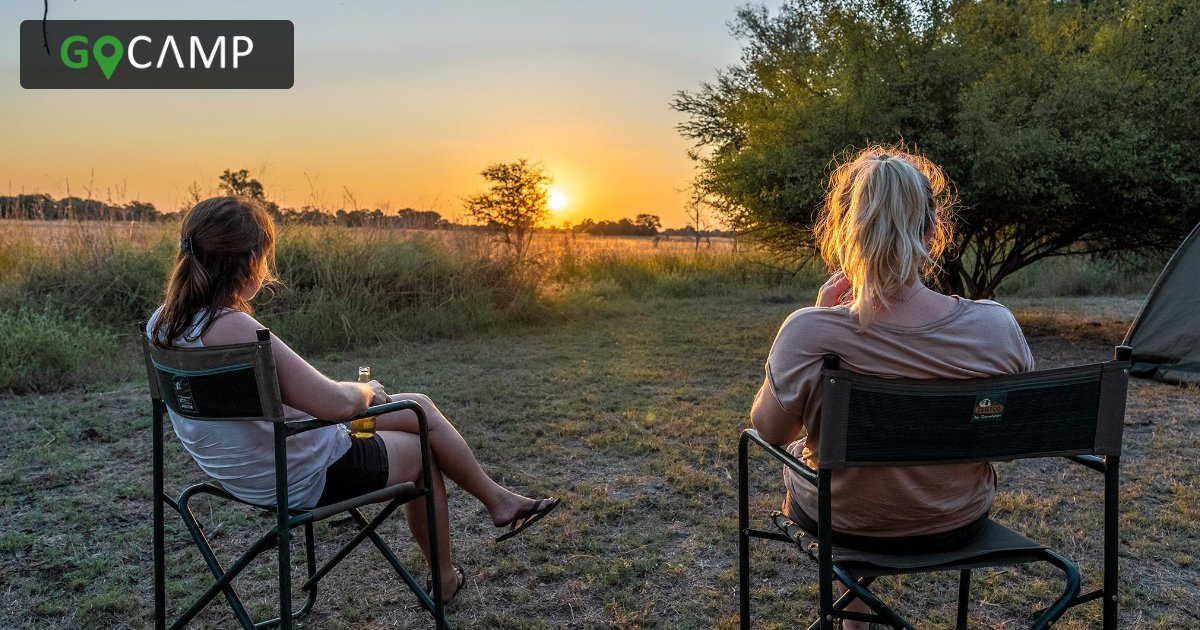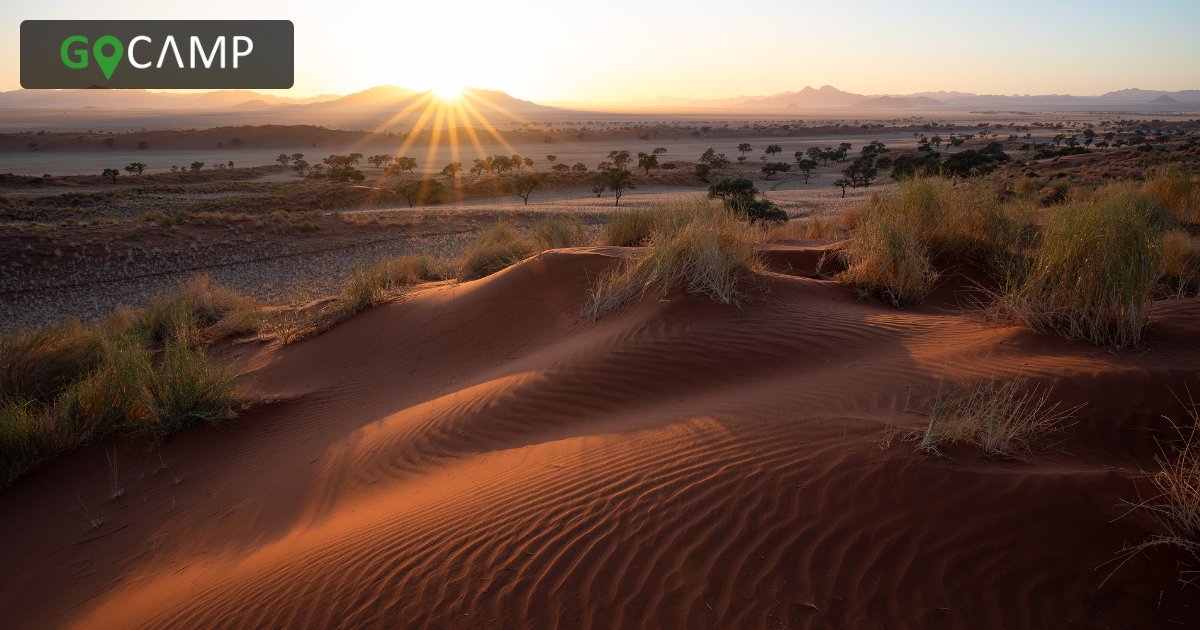Campsites in Namibia
Most campsites in Namibia are public, which means you will share them with other travellers from around the world. Depending on season and sight, it may get a little busy, such as the campsite in Sesriem to see the world-famous Deadvlei. Other campsites, such as the Ngepi Camp in the more remote Zambezi Region, have created private nooks for each group so you can enjoy a private experience in a public space.
If you’re lucky, your campsite even has a shop where you can stock up on chocolate and cool drinks. Yes, you can buy ice cream in Etosha National Park. Amazing, we know!
For those wanting to take a break from the rest of the world, there are private special campsites which you won’t share with anyone else. It’s just you and the wild.
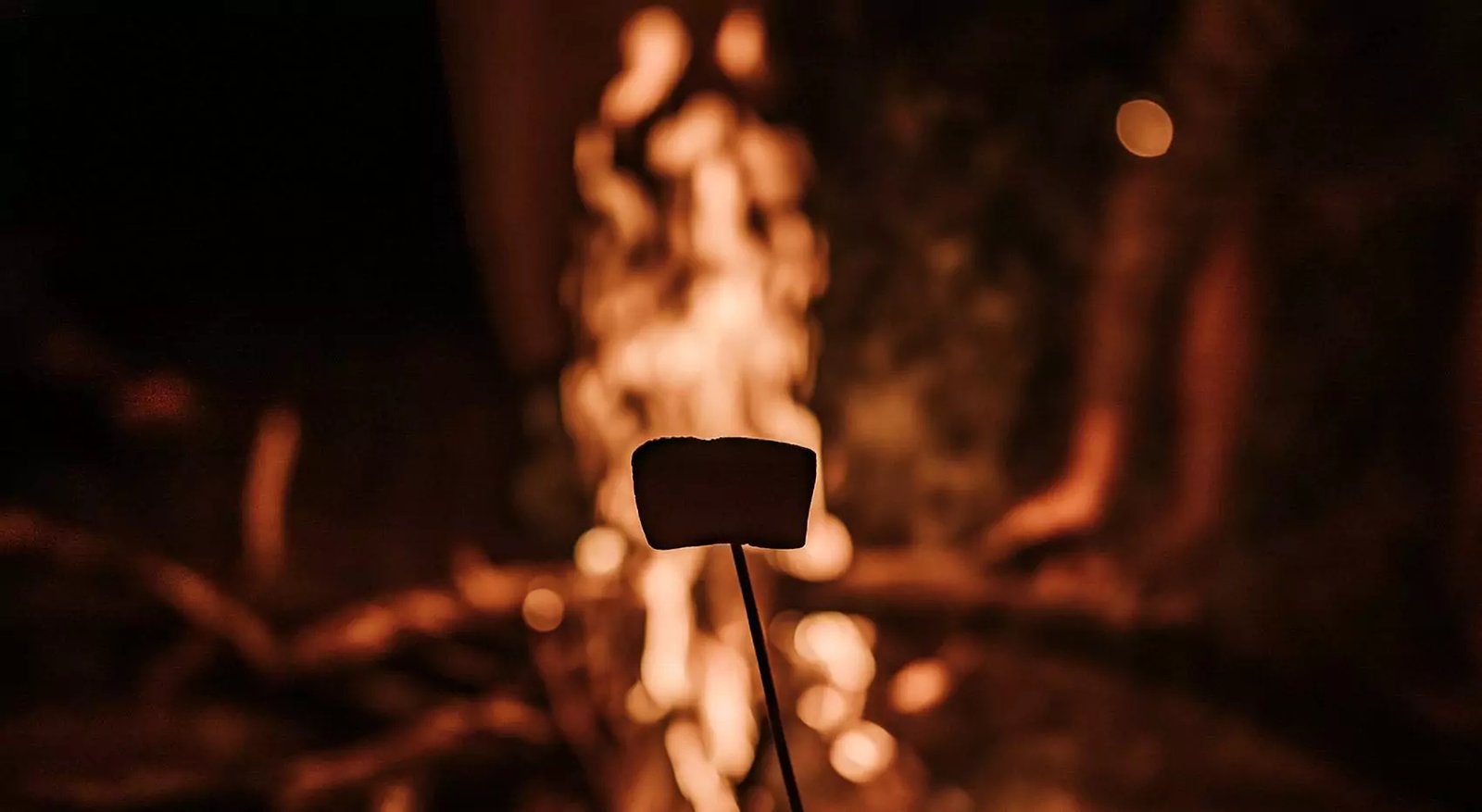
As camping implies, you will sleep in a tent. You will share your two-person tent with your travel buddy or a member of the same sex, if you’re travelling solo. While there may not be enough space for a king-size bed, there is ample room for a comfy sleeping mattress and your luggage. You can even stand up straight.
Your guide will be happy about a helping hand when setting up camp, but if you’re too tired from the day’s adventures, find a spot to sit down and relax.
The public campsites in Etosha National Park such as Okaukuejo and Namutoni are fenced-in, so there’s no need to worry about nightly visitors. If you can, try to stay up late and pay a visit to one of the waterholes – your game drive experience may continue well into the night, when animals come to the campsite’s waterholes to quench their thirst.

If you stay at an unfenced campsite, don’t worry: the tent canvas is an alien material to the wild animals, they don’t quite know what to think about it so they simply avoid it. Nevertheless, it might be a good idea to go to the loo before you go to bed.
Food on your camping safari in Namibia
Nothing guarantees a bad mood on a camping safari as bad food. After an exciting day out and about, all thoughts circle around dinner. Your guide is also your cook. He or she will be in charge to get the fire going and the knives out but appreciates if you join them in cutting veggies or stirring the stew. You’ll be surprised how different of an experience it is to be cooking outside, letting your gaze wander across the river banks in between cutting onions and garlic. It’s not a chore, it’s a pleasure.
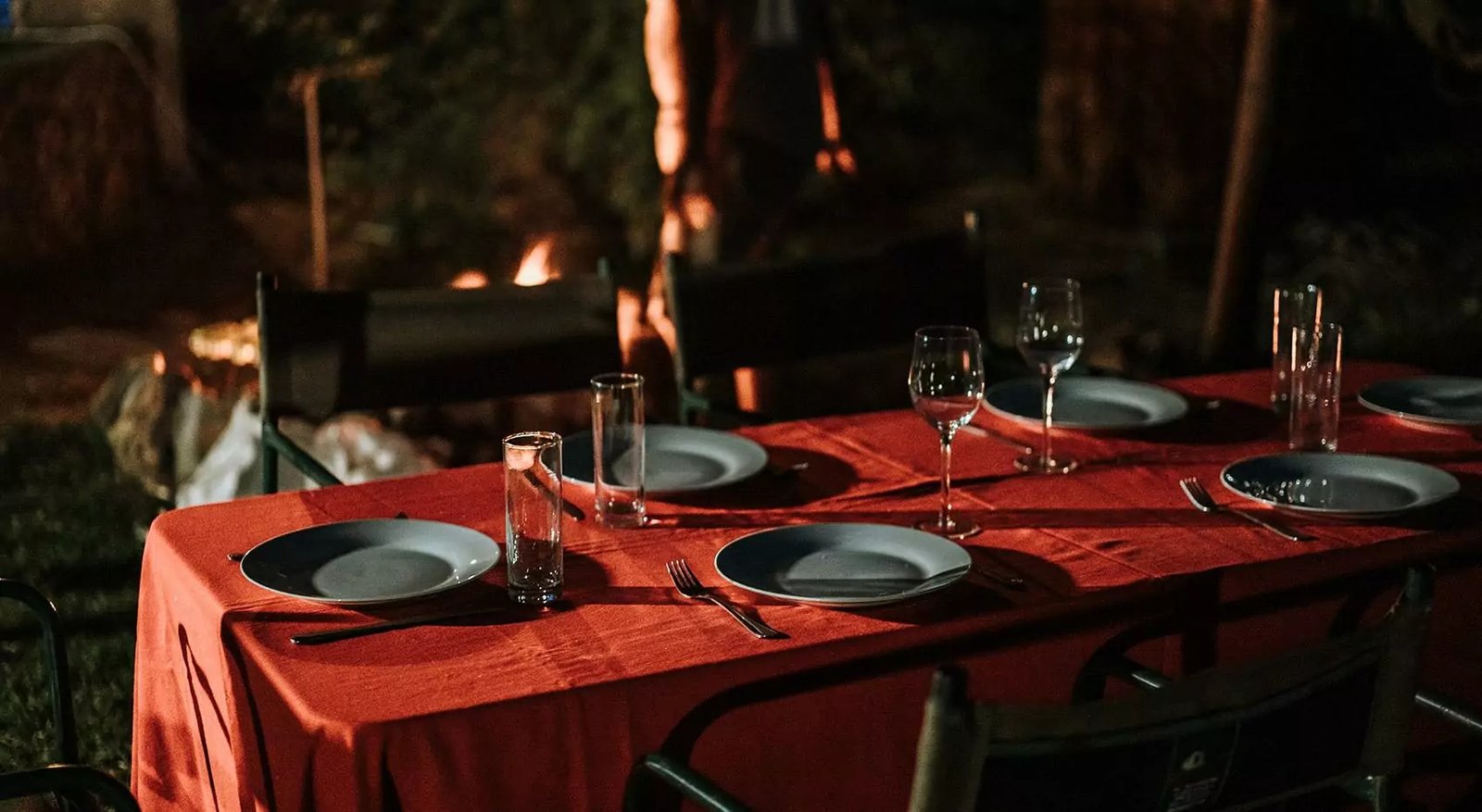
Feeding yourself in the middle of nowhere – a tummy full of appreciation.
While breakfast and dinner will be eaten in camp, you will have a lunch box for the day. You don’t eat meat or don’t like tomatoes? Just let us know in advance and a plan will be made. Camping gluten-free across Namibia? No problem, we got you covered.
Practical considerations while camping in Namibia
The last time you squatted behind a bush to relieve your bladder you were ten years old? No need to repeat it now. There are ablution blocks on all campsites. And even on long drives, most picnic sites will have a toilet space. Bring along toilet paper, mind you. One week on the road equals roughly one roll of toilet paper.
Under no circumstances forget to bring your shower-flipflops. Whether a shower room has just been renovated or just been cleaned, it doesn’t matter – you won’t feel comfortable showering barefoot in public showers.
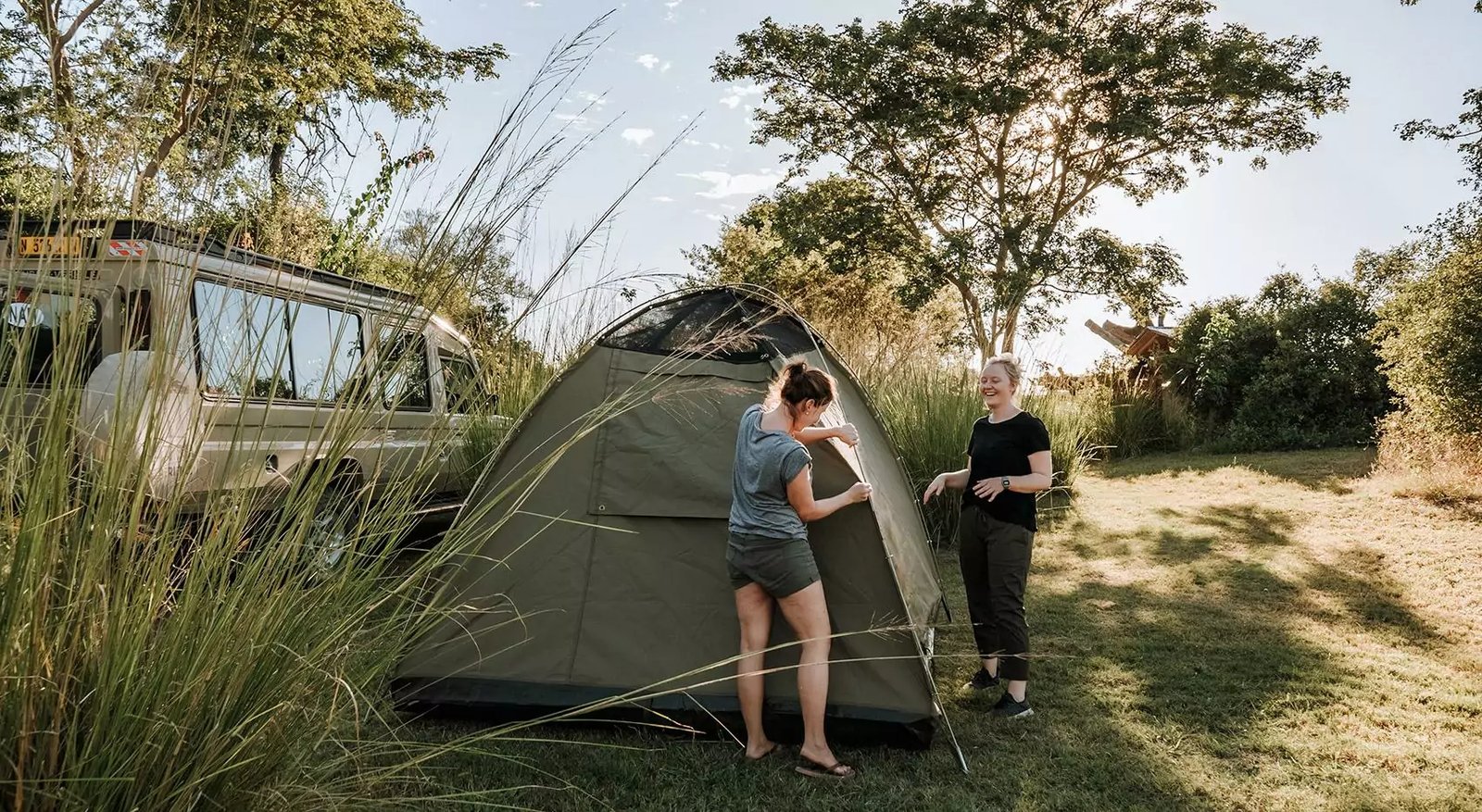
The Ministry of Environment and Tourism are currently considering a ban of plastic bags in NWR national parks. Do the right thing and bring reusable waterproof bags to pack your clothes and keep them dry while you’re under the shower.
Have you ever noticed that tourists going on a two-week holiday carry far more luggage than travellers who are on the road for a trip around the world? Be the latter, restrict your luggage to 15kg in a soft-shell bag. Suitcases are one of the most impractical things you can carry on a camping safari in Namibia.
After a few days, you will adapt to a new apparel camping rhythm: arriving at camp you will automatically swap your sunglasses against your head-torch and your shorts and t-shirt against a long-sleeve and pants. It’s not even a conscious movement, your body simply does what’s needed. You’re ready for the night.
When you go back home, open your bathroom door and find your hand at your forehead to switch on your torch – you’ve officially become a Namibian camper.
